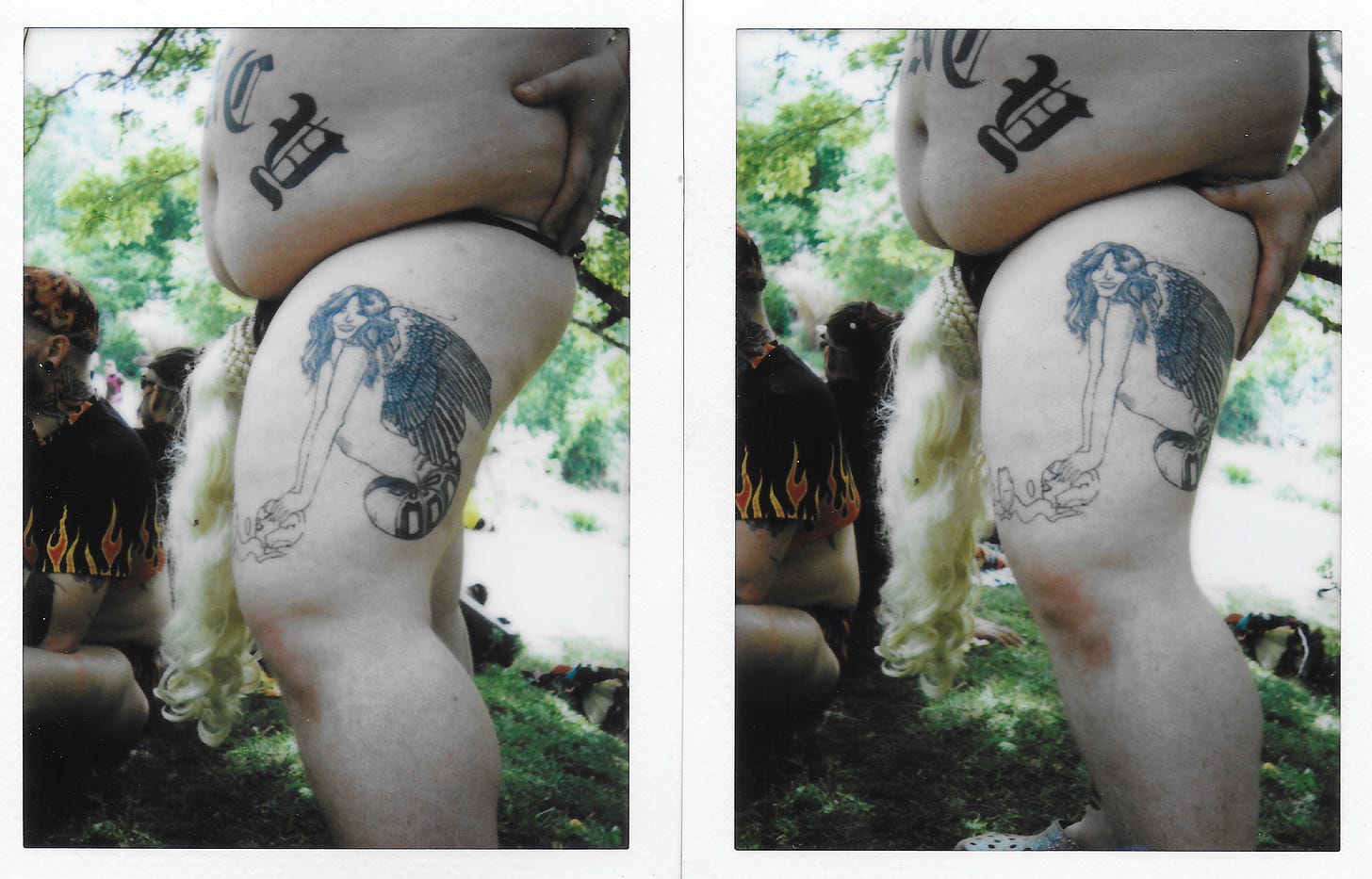Down a spiral stairway we go, into the basement that serves as their windowless photo studio. Of course, the basement is like the unconscious, an erotic arena, the storehouse of desire. Just the night before, I went to my favorite fetish club, Le Mensch. The ground level is a narrow bar where you check your clothes with the bartender. I stripped to my black work boots and had a shot of whisky before descending the damp stone steps into the artificial twilight. A dungeon is the best place in Paris not to speak French, the scenes dependent on a repertory of looks and gestures instead of words. All the better for projection, where the stereotype of an arrogant, ignorant American can assume its place within fantasy. Outside, these men might be dressed in dignified suits or lowly uniforms, separated by profession or class, but here in the dungeon they are recontextualized according to their dreams.
My account of visiting iconic photographers Pierre et Gilles in their Paris studio is out in the luxurious new issue of BLAU INTERNATIONAL.
By 1996 VH1 debuted The RuPaul Show, which ran for 100 episodes before being canceled. It seemed that he had hit the ceiling of a mainstream career as a drag queen — how long could the novelty last? Y2K saw his star drop from solid B to faltering D list, appearing intermittently as a gag contestant on shows like The Weakest Link, hosted by that bitchy English lady. Still RuPaul was terrific on it, as witnessed by the clip of him in a lime green dress and pale pink sunglasses, answering the slow-pitch $1,000 question: “What ‘H’ is the diagram based on planetary positions at the time of one’s birth?” With a long pause, and then full conviction, RuPaul answers “Chaka Khan.”
My essay “RuPaul on Repeat” is in the current wunderkind whirlwind The Whitney Review of New Writing #003.
Starting next month I’ll be hosting the “Angelic Transmissions” talk show, broadcast live every other week on just-revived East Village Radio. (I’ve even got a theme song—thanks to Gryphon Rue.) I’ll be archiving the recordings here. I’m excited to share my conversations with artists and writers about what they’re thinking, and what’s happening in our fair city. More information in the next Transmission, before the first show!
Peter had just received the diagnosis: six months to live. In early September 2019 we met in one of his favorite haunts in the East Village, a grubby Ukrainian restaurant where we’d eaten countless times over the last few years. I’d gotten into the habit of recording conversations while hanging out with my friends. Always haphazard, and without a goal beyond some open-ended Warholian reportage. “Peter, mind if I record?” “Sure.” Switching on Voice Memos, laying the iPhone on the table, the process weirdly goes out of mind. Now, eight months after Peter’s death, almost four years after the diagnosis, I can hear the sounds of that evening again for the first time: the clattering dishes and chattering patrons, the waiter setting down dinner. We ordered the same thing, blueberry blintzes— I wouldn’t have remembered that.
The posthumous collection of my friend Peter Schjeldahl’s columns The Art of Dying: Writings 2019-2022 is out this month from Abrams, with a foreword by Steve Martin and an introduction by me.
NOTE: If you pass by the iconic Casa Magazines (22 8th Ave) you’ll see a window filled with copies of my Tom of Finland cover story for The New York Review of Books!)
And now, without further ado, I’m proud to announce May’s Angel-of-the-Month:









love it Paris underground...the companion piece to the upper regions Genet's Le Balcon....hugs, Ann